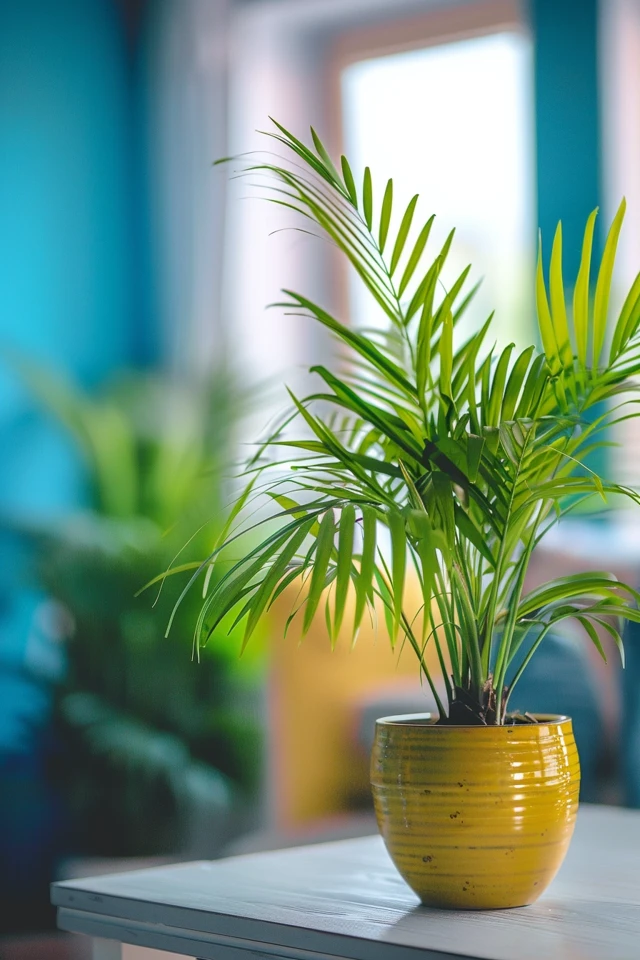Growing dates indoors can be a rewarding experience, allowing you to nurture and enjoy the beauty of tropical fruit right at home. However, it’s important to understand the limitations and requirements of date palm plants before embarking on this endeavor.
Date palms are tall trees that typically take many years to produce flowers and fruits. This makes them unsuitable for long-term indoor cultivation. While it is possible to start a date palm from a seed and enjoy it as a houseplant for a few years, eventually, the plant will outgrow your indoor space.
Date palms require intense sunlight, a tall greenhouse with ample space, and hand pollination to ensure fruit production. They thrive in desert-like conditions, mainly found in regions like the Middle East and North Africa. However, if you live in a hot, dry climate, you may have the opportunity to successfully grow date palms outdoors.
Key Takeaways:
- Indoor cultivation of date palms is limited due to their tall growth and long maturity period.
- Date palms require intense sunlight, a tall greenhouse, and hand pollination for fruit production.
- Commercially grown dates are found in desert-like conditions, but outdoor growth may be possible in hot, dry climates.

Indoor Date Palm Care: Tips for Growing Dates Indoors
If you decide to grow a date palm indoors, there are some important care tips to keep in mind. Date palms, like the pygmy date palm, thrive in warm, humid conditions. They require at least six to eight hours of direct sunlight each day for optimal growth. Ensure they are placed in a location that receives ample sunlight, preferably near a south-facing window.
Date palms prefer well-draining soil that is rich in organic matter. Moisture is essential for their growth, but overwatering can be detrimental. Water the plants deeply, allowing the soil to partially dry out between watering sessions. Be cautious not to let the plant sit in excess water, as it can lead to root rot.
Fertilize date palms regularly with a balanced fertilizer high in potassium to promote healthy growth. Pruning may be necessary to remove dead or damaged leaves and suckers, which drain energy from the main trunk. Pay attention to common pests such as scale and spider mites and treat them accordingly. If you live in a region with cold winters, it is best to grow date palms in containers that can be brought indoors during the winter months to protect them from frost.

Indoor Gardening Techniques for Homegrown Dates
Indoor gardening provides a wonderful opportunity to grow your own dates right at home. To start, harvest and clean the seeds from untreated, unpitted dates. Once cleaned, pot the seeds in moist soil and place them in a warm spot. Germination typically occurs within a month.
Once the date seedlings have sprouted, it’s important to provide them with the right conditions for growth. Make sure they receive full sun, warm temperatures, and regular watering. As the plants start to grow, transfer them to larger pots as needed. Keep in mind that the fronds of date palms develop spines at their base, so be cautious when handling them.
While true date palms can eventually outgrow indoor spaces due to their tall trunks, you can consider growing smaller cultivars like the pygmy date palm (Phoenix roebelenii). These compact palms are available at most garden centers and are better suited for indoor cultivation. They withstand moderate light conditions and are more adaptable to average indoor environments.
To ensure the health and well-being of your indoor date palms, make sure the containers have proper drainage holes to prevent waterlogging. Monitor humidity levels and avoid extreme fluctuations to prevent the leaves from browning or turning yellow. Additionally, regular fertilization and the removal of dead or diseased leaves are essential for their maintenance.


